2016 Rio de Janeiro Olympic GamesSep 5, 2016 by Justine Kelly
Spinning Sanne: Breaking Down the Gold Medalist's Beam Routine
Spinning Sanne: Breaking Down the Gold Medalist's Beam Routine
It may have come as a shock to some that the Netherlands' Sanne Wevers captured the gold medal on beam in Rio. Wevers was the No. 4 qualifier coming into th

It may have come as a shock to some that the Netherlands' Sanne Wevers captured the gold medal on beam in Rio. Wevers was the No. 4 qualifier coming into the final, and she posted a 6.3 D-score in the qualification round--one of the highest, but still behind USA's Simone Biles (6.7) and Laurie Hernandez (6.4), China's Fan Yilin (6.4), and Canada's Isabela Onyshko (6.5).
What the casual viewer may not have realized is when Wevers hits a routine, not only is her execution often excellent, but her D-score can be as high as 6.6, just behind Biles'. What makes her routine so impressive? We broke it down below.
The Code of Points is built to bring variety into gymnastics, and can be used to cater to gymnasts' strengths. While a gymnast like Biles, who has incredible power and is especially skilled at tumbling moves, can pack her routine with as many high-value acrobatic skills as she is allowed, other gymnasts may choose to construct their routines differently. The full turn can quickly morph into something much more difficult and can add valuable points to a gymnast's D-score.
Wevers' D-score, as performed during the Rio event finals, was a 6.6. Of that 6.6, 2.5 points were from basic composition requirements, and 0.5 points were from connection value. The rest (3.6) was made up of skills.
Of that 3.6, a total of 1.9 points were just from spins alone. While many gymnasts perform only one spin in their routine, Wevers performed a total of five. The two that gave her the most points were a double twisting L-spin (an E skill) and a triple spin (also an E skill), totaling one full point. Toward the end of her routine, she performed an incredible series consisting of a full L turn connected directly into a full turn, connected into a double turn, connected into a split leap. Those three turns totaled 0.9 in value, plus she got an additional 0.20 in connection value. So, 2.1 points of her D-score came from the spins and connecting them.
Although Wevers is especially skilled in dance elements on beam, she also included some unique and difficult acrobatic elements. It started right off the top with her mount - a round-off, 3/4 twisting back-handspring on to the beam. This mount is an E-skill, worth the same as Biles' opening barani (front flip with a half turn). Later in her routine, she performed a full twisting back-handspring (a D skill) out of a switch leap, which also gave her 0.1 in connection value.
Finally, her dismount is just as impressive as her mount. She performs a gainer with a full twist, which is a E-value dismount.
We have already mentioned some of Wevers' connections, but they are important because they make up 0.5 of her D-score. It's also worth mentioning that the connections she performed are not easy ones. For her acrobatic series, she performs two aerial cartwheels connected together. Her remaining connections are a front aerial into wolf jump, the three spins into split leap, and the switch leap into full twisting back-handspring.
In addition to her high D-score, Wevers also has some of the best execution in the field. In the event final, her E-score was second only to Hernandez with a 8.866. In addition to having great form with pointed toes and legs together, Wevers also hardly wobbled, which is impressive given the difficult spins and acrobatic elements she was performing.
Get a look at Wevers' stunning beam work in her routine from 2015 World Championships training below:
Related:
Rio 2016 D-Score Rankings
What the casual viewer may not have realized is when Wevers hits a routine, not only is her execution often excellent, but her D-score can be as high as 6.6, just behind Biles'. What makes her routine so impressive? We broke it down below.
Lots and lots of spins
The Code of Points is built to bring variety into gymnastics, and can be used to cater to gymnasts' strengths. While a gymnast like Biles, who has incredible power and is especially skilled at tumbling moves, can pack her routine with as many high-value acrobatic skills as she is allowed, other gymnasts may choose to construct their routines differently. The full turn can quickly morph into something much more difficult and can add valuable points to a gymnast's D-score.
Wevers' D-score, as performed during the Rio event finals, was a 6.6. Of that 6.6, 2.5 points were from basic composition requirements, and 0.5 points were from connection value. The rest (3.6) was made up of skills.
Of that 3.6, a total of 1.9 points were just from spins alone. While many gymnasts perform only one spin in their routine, Wevers performed a total of five. The two that gave her the most points were a double twisting L-spin (an E skill) and a triple spin (also an E skill), totaling one full point. Toward the end of her routine, she performed an incredible series consisting of a full L turn connected directly into a full turn, connected into a double turn, connected into a split leap. Those three turns totaled 0.9 in value, plus she got an additional 0.20 in connection value. So, 2.1 points of her D-score came from the spins and connecting them.
Unique Acrobatic Elements
Although Wevers is especially skilled in dance elements on beam, she also included some unique and difficult acrobatic elements. It started right off the top with her mount - a round-off, 3/4 twisting back-handspring on to the beam. This mount is an E-skill, worth the same as Biles' opening barani (front flip with a half turn). Later in her routine, she performed a full twisting back-handspring (a D skill) out of a switch leap, which also gave her 0.1 in connection value.
Finally, her dismount is just as impressive as her mount. She performs a gainer with a full twist, which is a E-value dismount.
Connection Value
We have already mentioned some of Wevers' connections, but they are important because they make up 0.5 of her D-score. It's also worth mentioning that the connections she performed are not easy ones. For her acrobatic series, she performs two aerial cartwheels connected together. Her remaining connections are a front aerial into wolf jump, the three spins into split leap, and the switch leap into full twisting back-handspring.
Execution
In addition to her high D-score, Wevers also has some of the best execution in the field. In the event final, her E-score was second only to Hernandez with a 8.866. In addition to having great form with pointed toes and legs together, Wevers also hardly wobbled, which is impressive given the difficult spins and acrobatic elements she was performing.
Get a look at Wevers' stunning beam work in her routine from 2015 World Championships training below:
Related:
Rio 2016 D-Score Rankings
Related Content
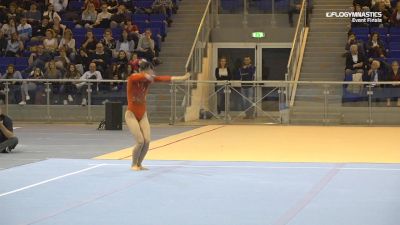 Replay: Ayumi Niiyama - Floor, Japan - 2019 City of Jesolo Trophy
Replay: Ayumi Niiyama - Floor, Japan - 2019 City of Jesolo TrophyJun 26, 2023
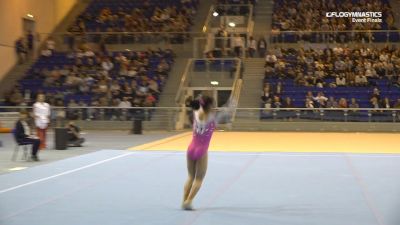 Replay: Zhang Jin - Floor, China - 2019 City of Jesolo Trophy
Replay: Zhang Jin - Floor, China - 2019 City of Jesolo TrophyJun 26, 2023
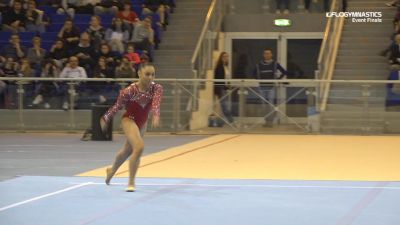 Replay: Emma Malabuyo - Floor, USA - 2019 City of Jesolo Trophy
Replay: Emma Malabuyo - Floor, USA - 2019 City of Jesolo TrophyJun 26, 2023
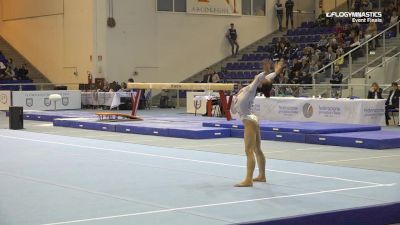 Replay: Qi Qi - Floor, China - 2019 City of Jesolo Trophy
Replay: Qi Qi - Floor, China - 2019 City of Jesolo TrophyJun 26, 2023
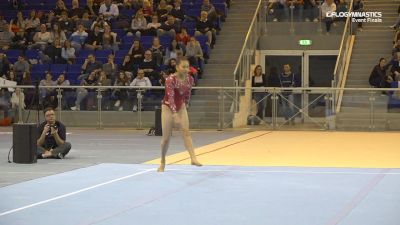 Replay: Sunisa Lee - Floor, USA - 2019 City of Jesolo Trophy
Replay: Sunisa Lee - Floor, USA - 2019 City of Jesolo TrophyJun 26, 2023
 Replay: Desiree Carofiglio - Floor, Italy - 2019 City of Jesolo Trophy
Replay: Desiree Carofiglio - Floor, Italy - 2019 City of Jesolo TrophyJun 26, 2023
 Replay: Lander vs Mars Hill | Mar 28 @ 6 PM
Replay: Lander vs Mars Hill | Mar 28 @ 6 PMMar 29, 2024
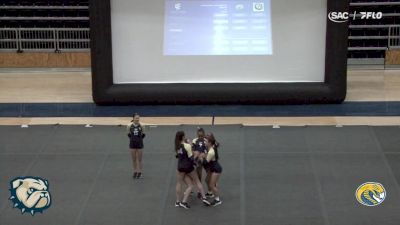 Replay: Coker vs Wingate | Mar 21 @ 6 PM
Replay: Coker vs Wingate | Mar 21 @ 6 PMMar 22, 2024
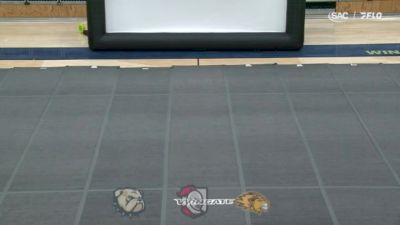 Replay: Wingate Tri-Meet - Acrobatics & Tumbling | Mar 15 @ 5 PM
Replay: Wingate Tri-Meet - Acrobatics & Tumbling | Mar 15 @ 5 PMMar 15, 2024